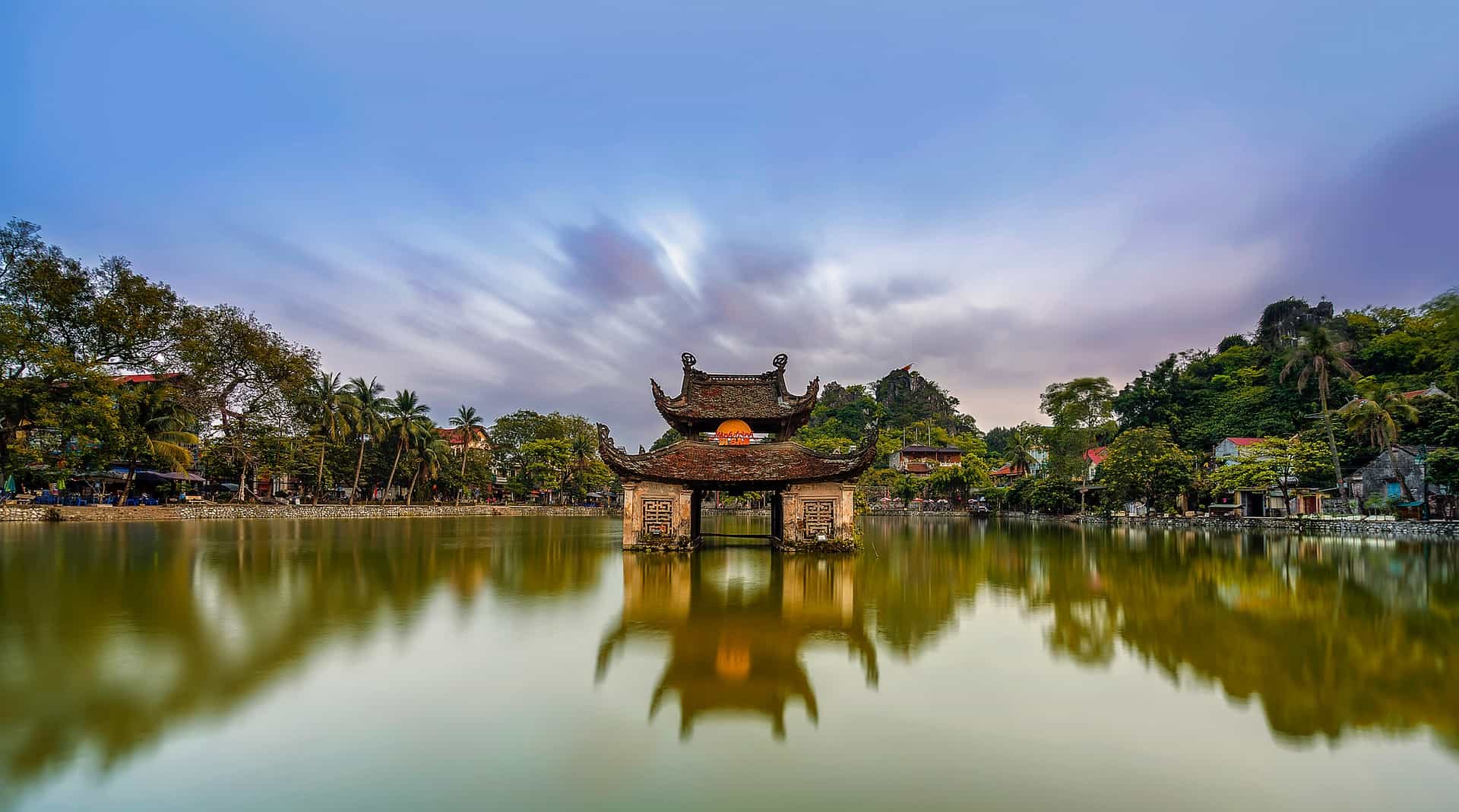Contents
10 of the must-visit museums in Vietnam
The history of Vietnam can be traced up to 4,000 years ago, and luckily, there are museums that happen to preserve a lot of the country’s forgotten stories and heritages.
Here are the top 10 museums in Vietnam that you must give a visit on your trip (in no particular order):
1) War Remnants Museum
The War Remnants Museum in Ho Chi Minh isn’t going to be everyone’s cup of tea. Unlike most museums, you have to build the stamina and courage in order to explore what’s inside, which is essentially a vast collection of retrieved things used in the Vietnam War.
Much like the museum itself, the history of this institution was received with a lot of controversy during its opening—and some of it has to do with the name. It was initially called the “Exhibition House for US and Puppet Crimes,” which was obviously aimed as an attack against South Vietnam and the U.S. They renamed it “Exhibition House for Crimes of War and Aggression” in 1990, until it became “War Remnants Museum” 5 years later after the normalization talk between Vietnam and the United States.
Even though its current name is not as suggestive as it originally was, the contents of the museum was not changed. This include photographs of American soldiers holding the decapitated heads of Vietnamese soldiers, exhibition of the infamous My Lai Massacre, the guillotine used by Frenchmen and South Vietnamese officials for the opposing parties, a detailed sculpture of an old Vietnamese locked in a small cell or “tiger cases,” preserved jars containing a human fetus mixed with defoliant Agent Orange, UXBs (or unexploded bombs) whose fuses are removed, and restored weapons/ vehicles such as UH-1 helicopter, A-37 Dragonfly attack bomber, M48 Patton tank, A-1 Skyraider attack bomber, and more.
Children are permitted to enter, but not it is really advisable for you to take your kids due to the museum’s explicit displays.
The War Remnants Museum currently stands as one of the most visited places in Vietnam, drawing in half a million (most of it are foreigners) visitors a year.
Location: 28 Vo Van Tan, District 3, Ho Chí Minh, Vietnam.
Opens: Monday to Sunday, 7: 30 a.m. to 12:00 p.m.; 1: 30 p.m. to 5 p.m.
Entrance Fee: 15,000 Vietnamese dong; Admission is free for all local
2) The Robert Taylor Museum of Worldwide Arms
The Robert Taylor Museum of Worldwide Arms is one of the newer museums to open in this list. It recently re-opened this April after its original location in Hai Dang was closed for personal issues with its owner Robert Taylor, and is slowly becoming a new favourite museum in Vietnam.
Started as a personal hobby, Taylor’s fascination with collecting private arms artefacts started when he was 18—when he bought his very first English cavalry sword from popular sword craftsman Robert Mole and Sons. During his time as a mechanical engineer, Taylor managed to buy rare private arms from countries such as France, Germany, Russia, Netherlands, Japan and the United Kingdom.
It is the largest museum holding private arms in Vietnam, according to the Vietnam Record Book Centre. It holds over
2,500 private arms artefacts that consist of 1,200 guns, more than 500 mannequins dressed up with old military uniforms, and 1,000 swords from the European and Asian continent. The European uniforms on display originated from the 18th century up to the 20th century.
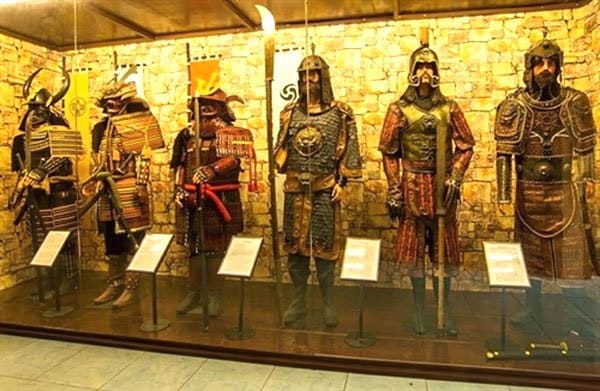
Location: 98 Trần Hưng Đạo, Phường 1, Thànhphố VũngTàu, Tỉnh BàRịa – VũngTàu
Opens: Monday to Sunday: 8:00 a.m. to 5:00 p.m.
Entrance fee: Ranges from 25,000 to 100,000 Vietnamese dong
3) Vietnamese Women’s Museum
Vietnamese Women’s Museum contains over a thousand pieces of art showcasing the contribution of women in the Vietnamese culture. Most of the materials being exhibited here have something to do with the Vietnam War, as Vietnamese women became the primary aide for injured soldiers during the battle. These are portrayed in the form of propaganda posters, costumes and more.
The museum’s mission seeks “to enhance public knowledge and understanding of history and cultural heritage of Vietnamese women, thus contributing to promoting gender equality.”
Its galleries are divided into three: 1) Women in Family (a woman as a mother and child), 2) Women in History (women’s role during important Vietnamese events such as the war, etc.) and 3) Women’s Fashion (variation of women’s clothes and style throughout the years).

Location: 36 Lý Thường Kiệt, Hang Bai ward, Hoàn Kiếm, HàNội, Vietnam
Opens: Tuesday to Sunday (Closed every Monday), 8:00 a.m. to 5:00 p.m.
Entrance fee: 30,000 Vietnamese dong
4) Vietnam National Museum of Fine Arts
The primary art museum of Vietnam, the Vietnam National Museum of Fine Arts is a two-building institution that houses over 20,000 works of art that covers items from the pre-historic times up to the present. Only 3,000 of them get to be displayed because of the limited space.
Its location, where the building of the French Ministry of Information was once located, is just across the famous Temple of Literature in Ha Noi.
This museum is divided into 6 themes, all containing important relics from different centuries: the pre-historic arts (10,000-year-old drawings of faces of humans and animals in the HoaBinh province, remnants of the dong son culture), 11th to 19th century arts (sculpture from the Early Le, Mac, and Later Le dynasties, arts from the Tay Son and Nguyen dynasties), 20th century to present arts (romanticism and realism in the modernistic Vietnamese art), ceramics and folk arts (wooden statues and relics for worship).
Aside from its permanent exhibitions, the Vietnam National Museum of Arts also holds occasional exhibitions of different artists as well as school-related activities for children and families to visit.

Location: 66 Nguyễn Thái Học, Ba Đình, HàNội, Vietnam
Opens: Monday to Sunday, 8: 30 a.m. to 5:00 p.m.
Entrance fee: 20,000 Vietnamese dong; Tours with guide costs 150,000 Vietnamese dong
5) Vietnam Museum of Ethnology
Entrance fee: 25,000 Vietnamese dong; a 50,000 Vietnamese dong camera fee will be charged for visitors taking pictures inside the museum; 100,000 Vietnamese dong for tour guide
If you are planning to travel Vietnam to learn about the country’s multiple cultures but you’ve got a very busy schedule, the Vietnam Museum of Ethnology is the ideal way to go.
The museum provides an in-depth look on all 56 ethnicities of Vietnam, and the displays of which conveniently comes with a handy English and French labeling. Displays include each ethni minority’s household materials, objects used for worship, and tools for survival.
Aside from its vast collection of exhibits on multiple Vietnamese ethnics, there is an outside section in the museum that hosts most of their activities and display of full-scale houses commonly built by different ethnic groups.
It is one of Vietnam’s best ethnic museum, and definitely a must visit for tourists and ethnic researchers visiting Ha Noi.
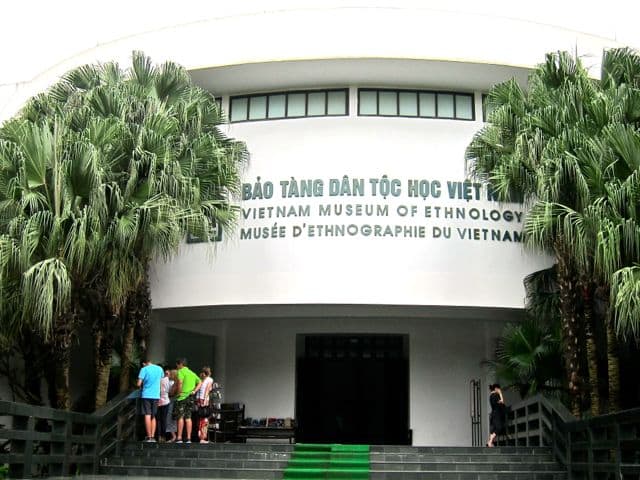
Location: Nguyễn Văn Huyên, Nghĩa Đô, Cầu Giấy, Hànội, Vietnam
Opens: Tuesday to Sunday (closed every Monday), 8: 30 a.m. to 5: 30 p.m.
6) Hoa Lo Museum
Used by North Vietnamese officials as a prison for U.S. P.O.Ws (prisoners – of – war) during the Vietnam war, the Hoa Lo Prison has become one of Vietnam’s most iconic places.
It was nicknamed by U.S. prisoners as the “Hanoi Hilton,” a reference to the luxurious Hilton hotel chain. Claims reported that U.S. prisoners are treated as if they checked into a hotel, with photograph and video evidences showing them being treated with care, the Americans cooking dinner for Christmas, and many others. These rumors were debunked by retrieved documents confirming it as a terrifying institution for torture/ executions, mostly performed with guillotine, solitary confinement, and other methods of torture.
Some of the well-known inmates in Hoa Lo Prison include U.S. Republican John McCain, retired Major General John L. Borling, and General Charles G. Boyd.
Although the prison itself was demolished in the ‘90s, the gatehouse, where the museum stands now, was able to replicate and relive the horrors that occurred in the institution during its operation. Like other war-focused museums in Vietnam, like the War Remnants, expect an uncomfortable tour in this museum given its preserved contents, but for a historical standpoint, you will surely be intrigued with Hoa Lo Museum’s treasured stories.
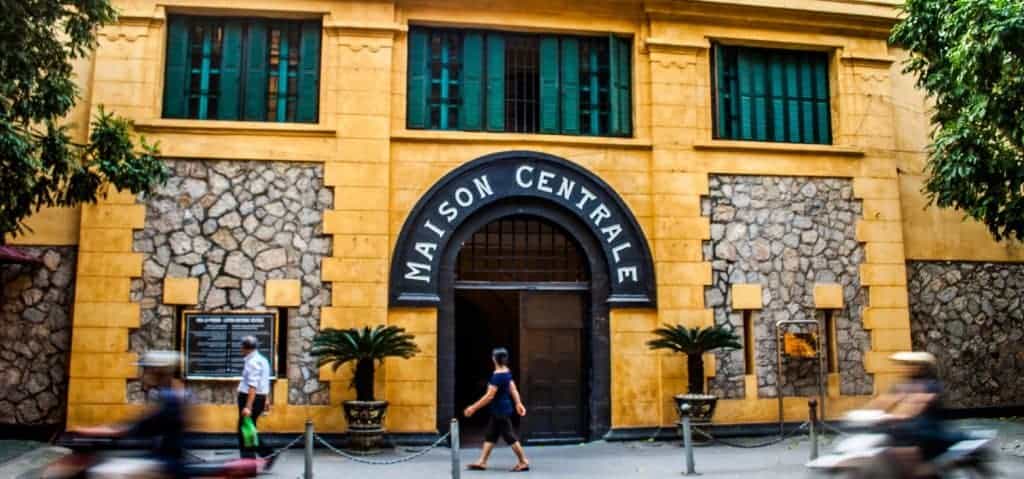
Location: Vietnamrsmw c n bhs, 1 HoảLò, TrầnHưngĐạo, HoànKiếm, HàNội, Vietnam
Opens: Monday to Sunday, 8:00 a.m. to 5:00 p.m.
Entrance fee: 20,000 Vietnamese dong
7) Museum of Trade Ceramics
Entrance fee: Everyone is mandated to purchase the Hoi An Old Town pass that covers all historical landmarks in Hoi An. An all-day pass costs 120,000 Vietnamese dong.
If you love archaeology, the Museum of Trade Ceramics might be the perfect place for you. With mostly pottery filling up this museum, it manages to richly tell the history of Hoi An and how it became one of the biggest trading places in Vietnam.
The museum was able to preserve pottery and important antique materials from the Chinese Tang Dynasty, which is 14 centuries ago.
The institution itself is a beautifully preserved house built in the 19th century that played a big role in ceramic trading at the time.
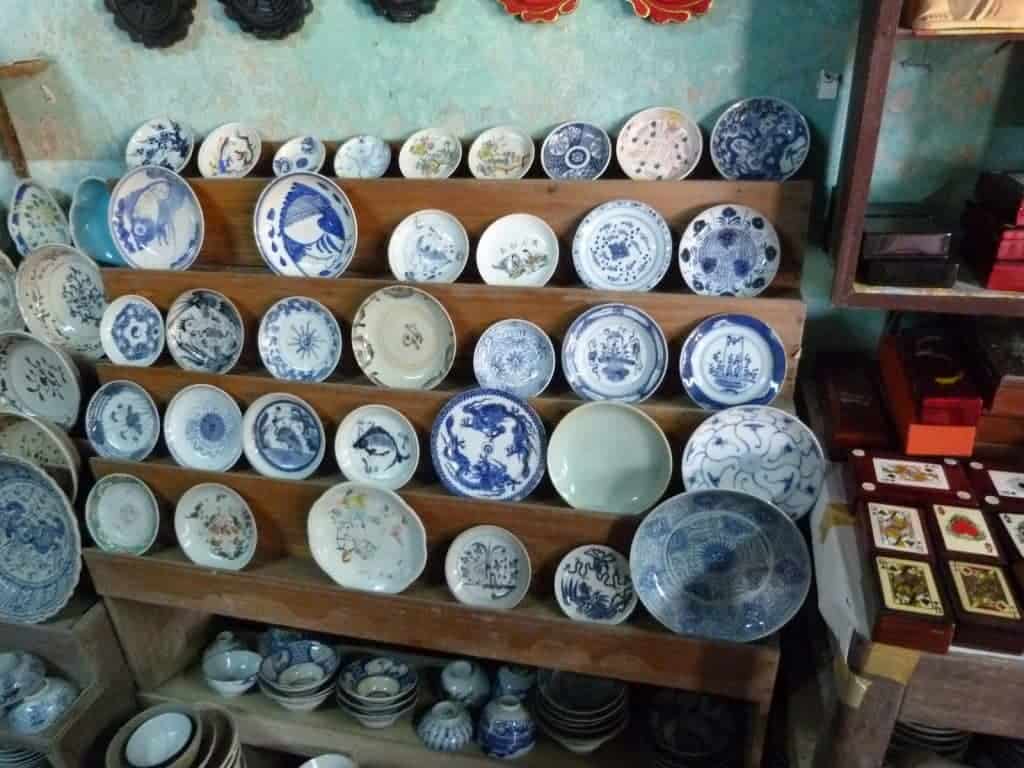
Location: 80 TrầnPhú, tp. HộiAn, Quảng Nam, Vietnam
Opens: Monday to Sunday, 8:00 a.m. to 5:00 p.m.
8) Coi Nguon Museum
Unlike most museums on this list, the CuoNguon Museum is specifically aimed at showcasing the history of PhuQuoc. It is also aptly named, as it translates to “The Roots Museum.”
The museum is actually a commemoration of couple Huynh Phuoc Hue and Nguyen Thi Phuong Dai’s fascination with collecting artefacts and things pertaining to PhuQuoc—and with this large collection, they were able to tell the town’s history.
From sands collected from all PhuQuoc beaches to a boat filled with preserved jars for trading, the simplicity of CoiNguon Museum is amazingly detailed.
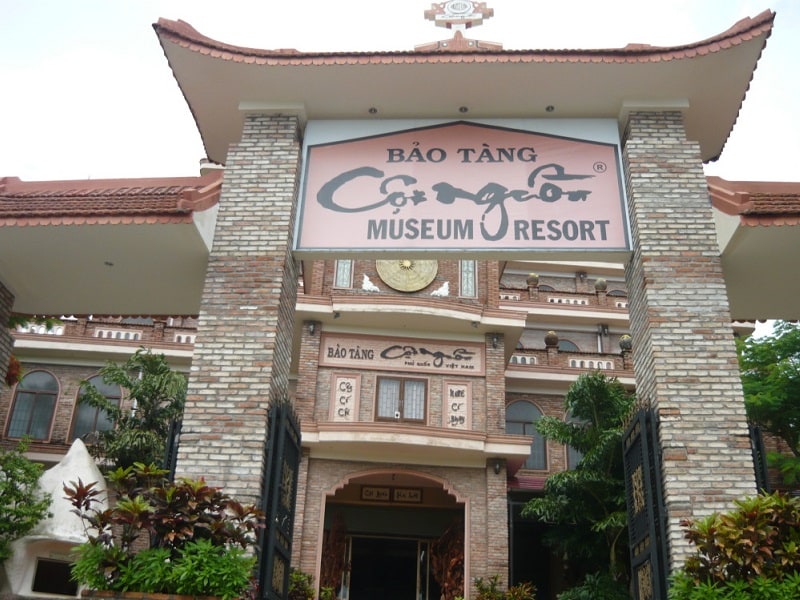
Location: 149 Trần Hưng Đạo, Khuphố 7, Thịtrấn Dương Đông, Huyện Phú Quốc, Tỉnh Kiên Giang, Vietnam
Opens: Monday to Sunday, 8:00 a.m. to 5:00 p.m.
Entrance fee: 20,000 Vietnamese dong
9) Museum of Cham Sculpture
The Cham Museum celebrates the culture of the ethnic group Cham in its entirety, from its origins up to the present.
Not only does it house the largest collection of Cham artefacts in the entire world, but several altars used by the group—which dates back as early as the 5th Century—have also been taken in terrific care for the exhibition.
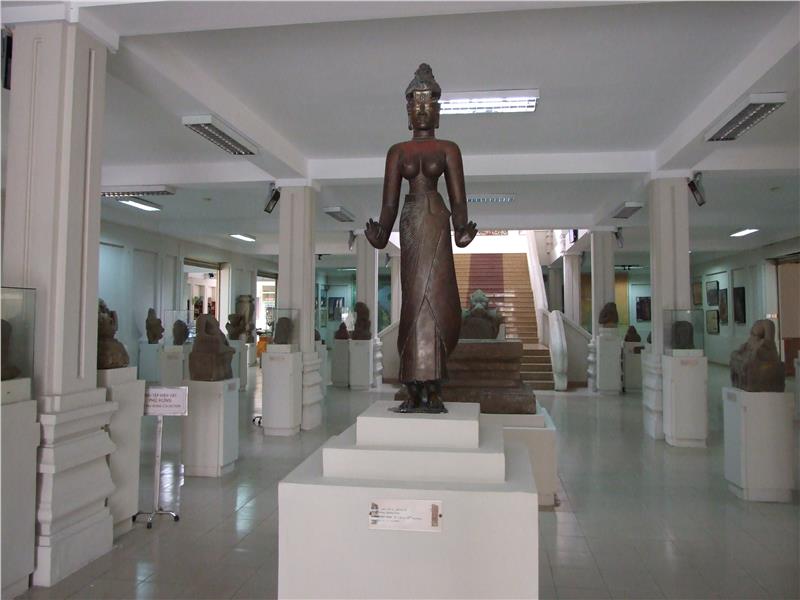
Location: 2 2 Tháng 9, HảiChâu, ĐàNẵng, Vietnam
Opens: Monday to Sunday, 7:00 a.m. to 5:00 p.m.
Entrance fee: 40,000 Vietnamese dong
10) Cu Chi War History Museum and Tunnels
The Cu Chi War History Museum offers almost the same as the War Remnants Museum, but with more emphasis on the area of Cu Chi. Each visit to the museum is never complete without going to its nearby tunnel, which is an essential supplement to the details presented in the museum.
The Cu Chi tunnel, which measures up to 75 miles, connects to two sites – the Ben Dinh and Ben Duoc tunnels. It served as a hiding place for Viet Cong (VC) soldiers during the Vietnam War, as well as a site for a lot of medical operations, tactics planning, resting ground, and communication procedures between the soldiers.
Still intact over the tunnels are booby traps set by VCs for potential attackers and areas such as trap doors and crawling spaces that managed to be preserved after the tunnel was bombed by the United States during its successful raid in 1969.
If you’re planning for a trip to this museum, expect to be treated with a local Vietnamese snack commonly eaten by VCs. Guests can also give the shooting range a try. Selection of guns include the M60 and the AK-47 or the M16.
Aside from these 10, there a lot of other great museums in Vietnam that you must visit, as each displays a specific chapter in Vietnam’s history. These include the Vietnam Military History Museum, Gia Long Palace, Museum of Vietnamese History, B52 Victory Museum, Museum of Sea Hunyh Culture, the Can Tho Museum, and many more.
Location: Ap Phu Hiep, xaPhu My Hưng, huyen Cu Chi, HoChí Minh 733800, Vietnam
Opens Monday to Sunday, 7:00 a.m. to 5:00 p.m.
Entrance fee: 90,000 Vietnamese dong. (A separate booking tour can also be availed for 110,000 Vietnamese dong)
Helpful articles and blog posts on museums in Vietnam:
We only recommend writers and blogs that we read regularly and believe will deliver substantial value to our readers. The following is our top picks of articles we think are worth reading.
- “Museum of Cham Sculpture, Danang” – by Rust Compass
- “TBT: Crawling through the Cu Chi Tunnels in Ho Chi Minh City, Vietnam” – by Jess Carey of EAT. TRAVEL. BLOG: ORDINARY GIRL, EXTRAORDINARY DREAMER
- “Visiting Coi Nguon Museum in Phu Quoc” – by Indochina Pioneer
- “Spending My Morning At Vietnam National Fine Arts Museum” – by My Very First Blog
- “The Very Informative Museum of Trade Ceramics” – by Cush Travel Blog
How Did We Do?
Is the article “Top 10 museums in Vietnam” useful? If so, please share and like this post, as it helps other travelers find information. Many thanks! You can follow us on Twitter or Facebook for further updates!


